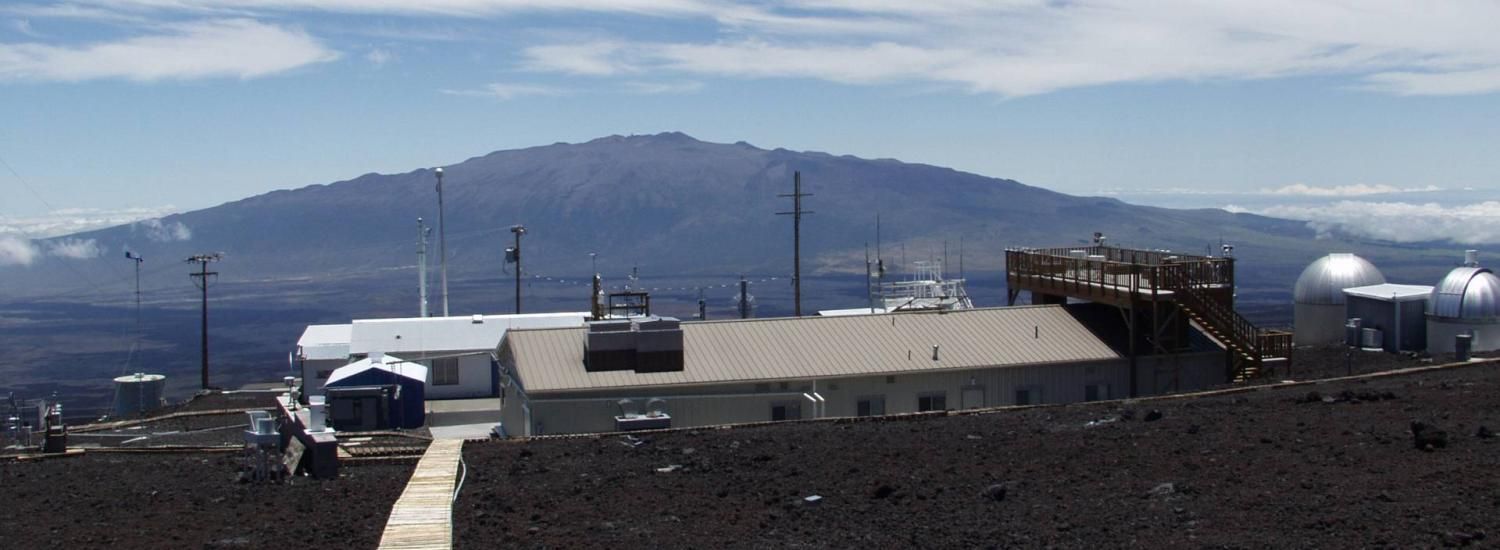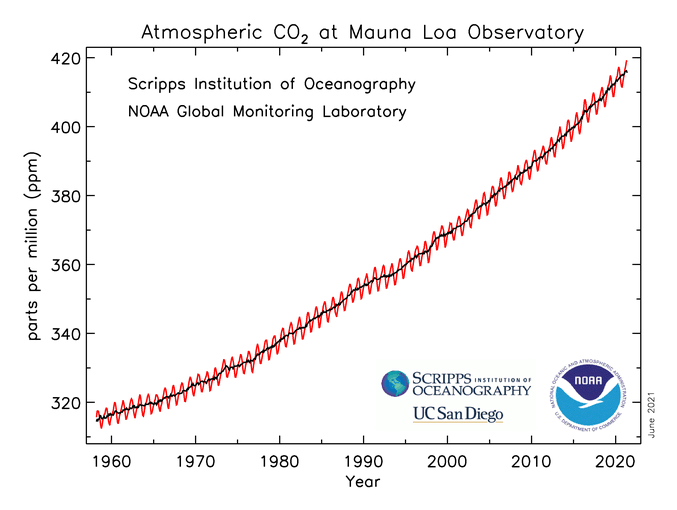NOAA: Carbon dioxide peaks near 420 ppm at Mauna Loa Observatory

Atmospheric carbon dioxide measured at NOAA’s Mauna Loa Atmospheric Baseline Observatory peaked for 2021 in May at a monthly average of 419 parts per million (ppm), the highest level since accurate measurements began 63 years ago, scientists from NOAA and Scripps Institution of Oceanography at the University of California San Diego announced today.
Scripps’ scientist Charles David Keeling initiated on-site measurements of carbon dioxide, or CO2, at NOAA’s weather station on Mauna Loa in 1958. NOAA began measurements in 1974, and the two research institutions have made complementary, independent observations ever since. CIRES researchers are involved at many stages, from air sampling to data analysis.
In May, NOAA's measurements at the mountaintop observatory averaged 419.13 ppm. Scientists at Scripps calculated a monthly average of 418.92 ppm. The average in May 2020 was 417 ppm.
Pieter Tans, a senior scientist with NOAA’s Global Monitoring Laboratory, noted that CO2 is by far the most abundant human-caused greenhouse gas, and persists in the atmosphere and oceans for thousands of years after it is emitted. “We are adding roughly 40 billion metric tons of CO2 pollution to the atmosphere per year,” said Tans. “That is a mountain of carbon that we dig up out of the Earth, burn, and release into the atmosphere as CO2, year after year. If we want to avoid catastrophic climate change, the highest priority must be to reduce CO2 pollution to zero at the earliest possible date.”

This graph depicts the upward trajectory of carbon dioxide in the atmosphere as measured at the Mauna Loa Atmospheric Baseline Observatory by NOAA and the Scripps Institution of Oceanography. The annual fluctuation is known as the Keeling Curve.
CO2 pollution is generated by emissions from carbon-based fossil fuels used for transportation and electrical generation, by cement manufacturing, deforestation, agriculture, and many other practices. Along with other greenhouse gases, CO2 traps outgoing heat from the planet’s surface that would otherwise escape into space, causing the planet’s atmosphere to warm steadily.
While the year-to-year increase of 1.8 ppm in the May CO2 peak was slightly less than previous years, CO2 measurements at Mauna Loa for the first five months of 2021 showed a 2.3 ppm increase over the same five months of 2020, close to the average annual increase from 2010 to 2019. There was no discernible signal in the data from the global economic disruption caused by the coronavirus pandemic.
Read more at NOAA Research.